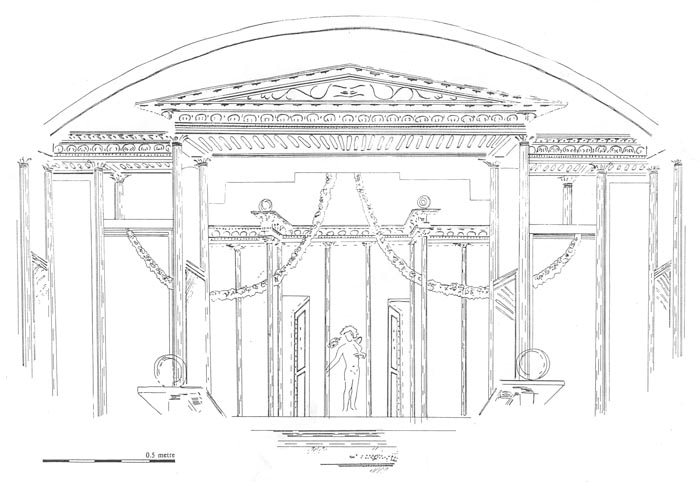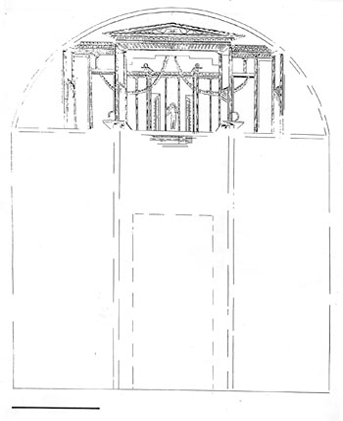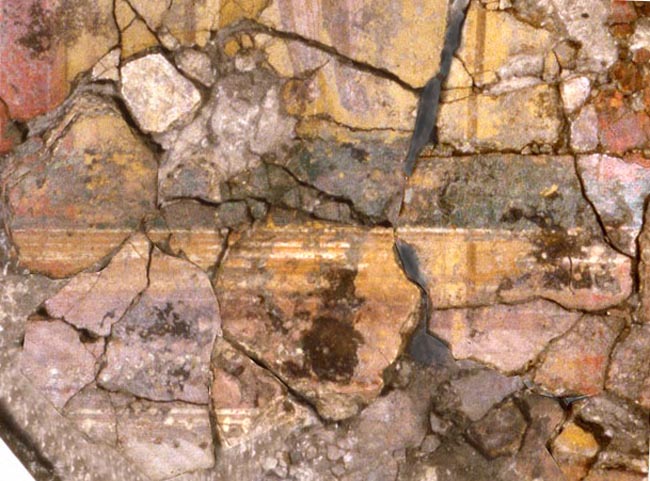Following the recovery of the two paintings and thanks to the encouragement of Hugh Chapman, the technicians’ department of the museum constructed heavy duty plywood boxes to contain and protect each segment of the recovered material.
After some experiment with various solvents, the painting’s surface was given a preliminary cleaning with acetone, great care being taken to ensure the integrity of the paint layer. In a number of places where the paint layers and their support were found to be badly shattered, the injection of PVA emulsion and gentle repositioning of the disturbed fragments provided a temporary solution until a final restoration could be carried out. Much of this preliminary work was carried out by Monica Redmond, a conscientious volunteer.
The condition of the first phase painting was, on the whole good, given that the painting had fallen on to the very uneven surface of a robbed out hypocaust and had consequently fractured into many hundreds of fragments.
The surface of the paint layer was also disfigured, in places, by patches of dark incrustation which unfortunately obscured some of the painting’s detail. No treatment of this damage was attempted at this stage, although the use of mixture AB 57 has been proposed to try and remove it. However the partial penetration of the paint layers by the incrustation may make its complete removal impossible.
Seen here are two of the many holes hacked into the painting surface to provide a key for the second phase fresco, can be seen to the right of this figure, penetrating the red panel. Interestingly, one of the holes clearly penetrates the incrustation layer indicating that this disfigurement became visable during the decorations working life.
After cleaning the painted surface was protected with the application of a 5% solution of Paraloid B72 . Each segment of the painting was then photographed, a montage constructed (figure 1) and line reconstructions were produced.(figures 2 & 3).


The height of the room may be thought rather speculative but the distance from the floor to the highest point of the vaulted ceiling must equal the depth of the lunette (1.5 metres), plus the height of the door (close to 2.0 metres), plus the depth of the painting between the base of the lunette and the top of the door, (at least 0.5 - 0.6 metres), adding up to a total measurement which must be about four metres.
The very fragmentary remains of the painting surviving below the lunette are illustrated in figure 4 which reveals tantalising but ambiguous details of this scheme.


